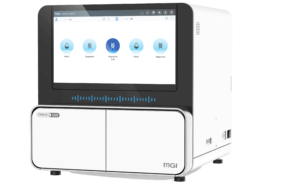

Breaking the Barriers in Sequencing Speed
Description
The Worlds Fastest Sequencer DNBSEQ-G99
As one of the sequencers with the fastest speed among mid-low throughput in the world, DNBSEQ-G99 is developed based on MGI’s core DNBSEQ sequencing technology, enabled by innovations in biochemistry, optics, fluidics, temperature control, and other core systems. DNBSEQ-G99 is applicable for multiple sequencing methods and only needs 12 hours to complete PE150 sequencing & PE50/SE100 in 5 hours.
Redefining Sequencing Precision and Speed.
Dive into the future of sequencing with the DNBSEQ-G99 - fastest in the world and easy-to-use sequencer with optional-based integrated bioinformatics module, especially suitable for targeted gene sequencing and small genome sequencing, delivering rapid and high-quality data output.
- Innovative DNBSEQ™ Technology: Experience the synergy of advanced biochemistry, optics, fluidics, and temperature control.
- Unmatched Versatility: Perfect for targeted oncology panel sequencing, small whole-genome sequencing or whole-exome sequencing of 1-4 samples.
- Rapid sequencing: Only 12 hrs for PE150 (from loading to FASTQ).
- Flexible throughput: Independent loading and running of dual flow cells
- Bioinformatics integrated: Option to include built-in bioinformatics module to support sequencing and advanced analysis in a single machine.


Redefining Sequencing Precision and Speed.
Dive into the future of sequencing with the DNBSEQ-G99 – fastest in the world and easy-to-use sequencer with optional-based integrated bioinformatics module, especially suitable for targeted gene sequencing and small genome sequencing, delivering rapid and high-quality data output.



PE150 in just 12 hours
8 – 48Gb per run
Run 2 flow cells independently






High Densitiy Flow Cell
- 600nm pitch high density patterning
- 68% more DNB loading per unit area
- Novel triangular configuration
Super Fast Biochemistry
- 10s rapid fluorescence reaction
- Biochemistry incubation reaction speed up from minutes-range to seconds-rang
Surpassing the Optical Diffraction Limit
- In-house developed ultra-high quality objective lens
- Improvement of signal capture efficiency by decreasing scan area
Rapid Temperature Control
- ~7°C/s for heating and cooling
- Doubles the heating and cooling speed of conventional PCR instrument

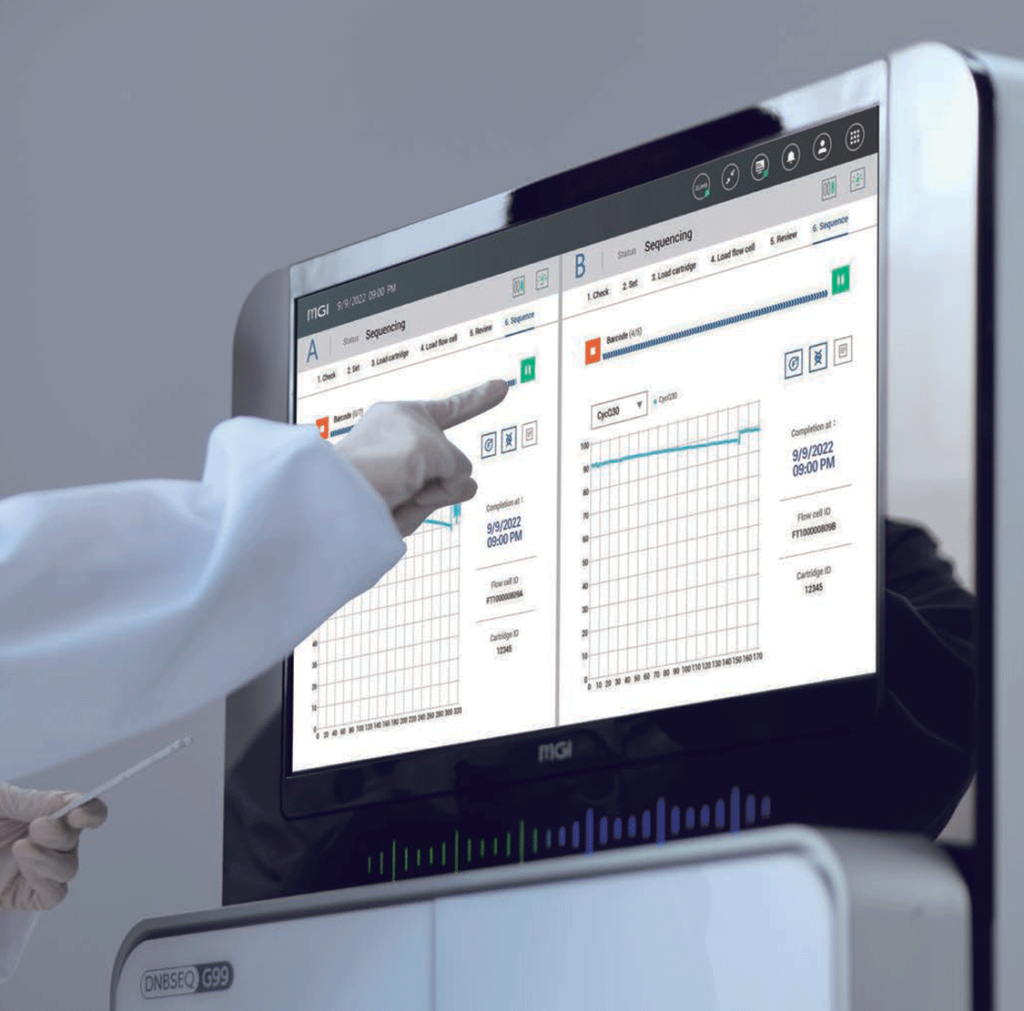
The DNBSEQTM Advantage:
- Increased Accuracy: DNBSEQ™ technology combines the low error accumulation of DNA Nanoballs (DNB) with the high signal density of regular array chips, resulting in significantly improved detection accuracy, especially for Whole Genome Sequencing (WGS) and Whole Exome Sequencing (WES).
- Efficient Preparation and Amplification: The DNBSEQ™ process includes efficient DNA single strand circularization and DNB making, using rolling circle replication (RCR). RCR reduces error introduced during amplification, leading to greatly improved sequencing accuracy.
- Optimized Utilization and High Throughput: The patterned array and DNB loading ensure high sequencing accuracy, optimal chip utilization, and efficient reagent usage. This results in high throughput and cost-effective sequencing.
- Advanced cPAS Technology: The Combinatorial Probe-Anchor Synthesis (cPAS) technology incorporated in DNBSEQ™ allows for high-speed, high-accuracy base calling, significantly improving the sequencing reaction time.
- Proprietary Base Calling Algorithm: MGI’s proprietary Sub-pixel Registration algorithm and GPU accelerated algorithm enable image intensity extraction at the sub-pixel level, greatly improving base call accuracy and dramatically increasing data processing speed.
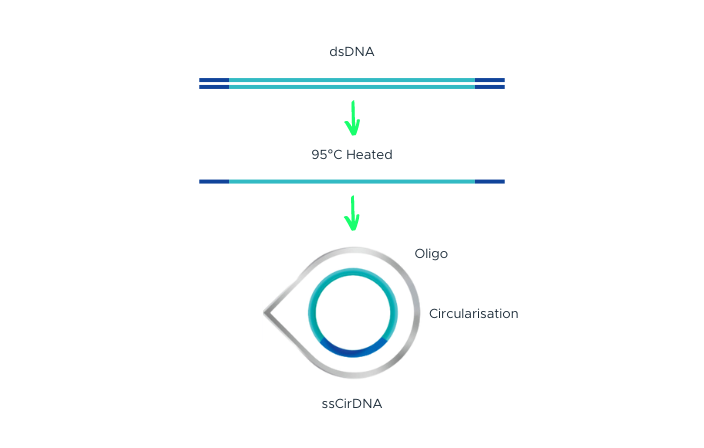
Preparation Technology
The process begins with double-stranded DNA that contains adapter sequences at both ends. We apply heat to this DNA, causing it to ‘denature’ or separate into two single-stranded DNAs (ssDNA). A specially designed molecule, called a ‘splint oligonucleotide’, plays a crucial role next. This molecule has a sequence that matches both ends of one of the separated strands, allowing it to bind or ‘hybridize’ to these ends. When it does so, it creates a structure known as a ‘nicked circle’. Finally, an enzyme called DNA ligase is used to repair the ‘nick’ in this circle, transforming it into a seamless, single-stranded circle. This carefully controlled process, part of our DNA Nanoball Preparation technology, is one of the reasons you can place your trust in our DNA sequencing capabilities.
DNB Making
DNA Nanoballs (DNBs) are synthesized using a technique known as Rolling Circle Replication (RCR). In this process, a single-stranded DNA circle serves as the template. DNA fragments of varying lengths are amplified to yield roughly 300 to 500 copies. Interestingly, quantifying the concentration of DNBs prior to loading onto the sequencing chip is straightforward with Qubit measurements, eliminating the need for costly quantification instruments or reagents. A significant advantage of RCR lies in its ability to minimize errors introduced during amplification. RCR employs a high-fidelity DNA polymerase, ensuring that each amplification cycle uses the original DNA circle as the template. This mechanism significantly reduces the probability of encountering identical amplification errors across the 300-500 copies of a DNB. Furthermore, RCR helps bypass the issues often associated with other amplification methods such as PCR, including the exponential accumulation of errors, GC biases, and dropout events. As a result, RCR significantly enhances sequencing accuracy on the DNBSEQ platform, reaffirming MGI’s commitment to providing precise and reliable DNA sequencing solutions.
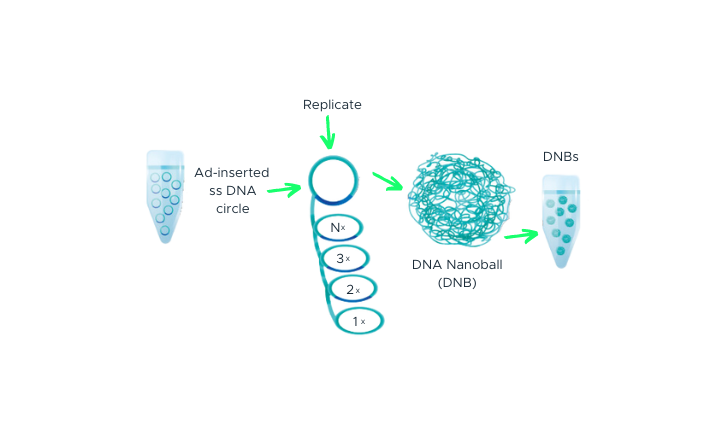
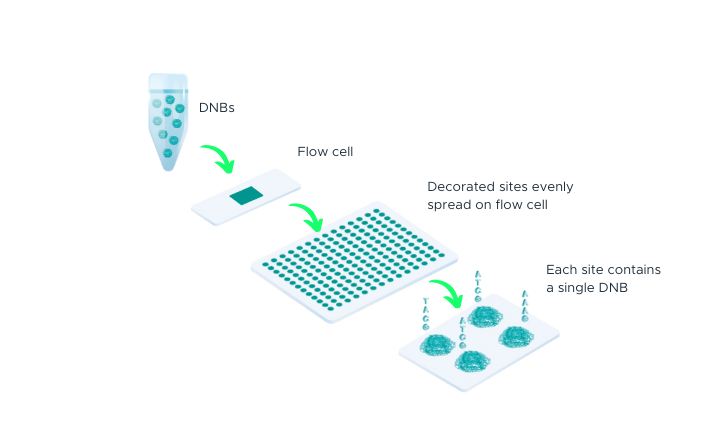
DNB Loading
DNA Nanoballs (DNBs) inherently carry a negative charge under acidic conditions, a characteristic brought about by their phosphate backbone. On the other hand, our slide surface is specially designed to carry a positive charge. The natural interplay between these opposing charges serves as the primary mechanism enabling DNBs to adhere firmly to the slide surface. To ensure the DNBs’ sustained positioning over hundreds of cycles, MGI utilizes specially developed loading buffers. These buffers maintain the integrity of the signals throughout the process, preventing any compromise in data quality. Moreover, MGI has fine-tuned the DNBs to match the size of the active sites on the slides. This precision ensures each active site accommodates only a single DNB, maximizing effective spot yield and enhancing overall sequencing efficiency. This careful orchestration of DNB size and slide design is part of MGI’s commitment to offering robust and accurate DNA sequencing solutions to scientists and researchers.
cPAS (Combinatorial Probe-Anchor Synthesis) Technology: This technique commences once the sequencing primers bind to the adapter region of the DNA Nanoball (DNB). At this point, a DNA polymerase introduces a fluorescently tagged dNTP probe to the mix. Any unbound dNTP probes are carefully rinsed away before the DNB Flow Cell is imaged. This image captures the fluorescence signals, which are then converted into digital data. The base information, or DNA sequence, is subsequently determined using MGI’s proprietary base-calling software. Following the imaging phase, a regeneration reagent is introduced. This agent effectively removes the fluorescent dye and readies the DNBs for the next sequencing cycle. Notably, MGI has significantly reduced the sequencing reaction time to less than one minute. This substantial improvement is attributed to enhancements in MGI’s sequencing biochemistry and the discovery of a superior sequencing polymerase. This particular polymerase was identified from an extensive screening process involving tens of thousands of mutants, showcasing MGI’s commitment to delivering the most efficient and accurate DNA sequencing process for researchers and scientists.
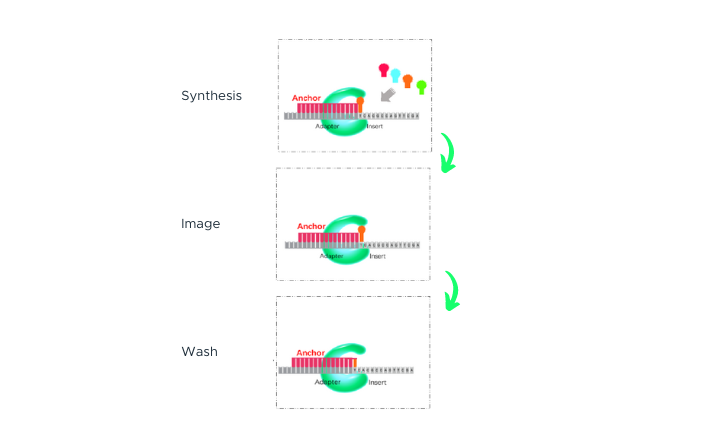
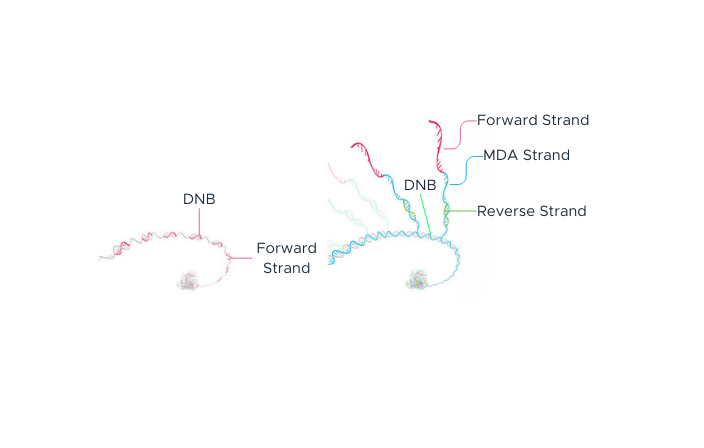
2nd Strand Preparation
Once the sequencing of the first strand is complete, the synthesis of the second strand is initiated. This is accomplished by introducing primers specifically designed for 2nd strand generation and a special type of polymerase that exhibits strand displacement activity. The polymerase elongates the new primer until it encounters the original sequenced strand. At this point, it displaces the initial sequencing strand, thus creating a new single-stranded template. This second strand has been optimized to maximize its length while ensuring its attachment to the original DNA Nanoball (DNB). Upon hybridizing the 2nd strand sequencing primer, the same sequencing chemistry used for the first strand sequencing is employed again. It’s worth noting that the newly generated second strand template contains more copies of the insert DNA. This results in a significantly stronger signal and enhances the sequencing accuracy of the second strand. This process design exemplifies the dedication to achieving optimal sequencing fidelity.
Base Calling Algorithm
The sophisticated base-calling algorithm calculates base calls and their respective quality based on the signal intensities captured across all channels. The correlation between signal characterization and sequencing errors is well understood and grounded in established data models. From this, we predict sequencing errors for unknown samples, which are calculated according to their signal characterizations. All quality scores adhere to the recognized phred-33 standard. To improve base call accuracy, MGI has engineered a proprietary Sub-pixel Registration algorithm, allowing for image intensity extraction at a more granular, sub-pixel level. This unique approach greatly enhances the precision of base call determination. This cutting-edge technology, inclusive of a GPU-accelerated algorithm, has significantly elevated both the speed and accuracy of data processing. Through the optimization of execution efficiency and real-time image analysis and base calling, MGI ensure this technology stands at the forefront of the industry.
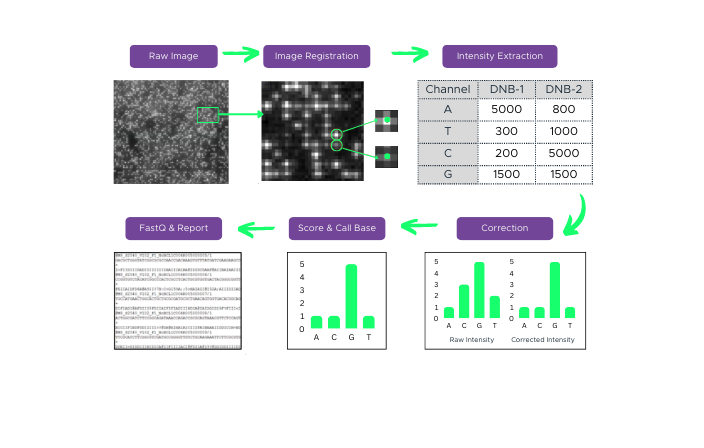
Specifications
| Dimensions | Power |
|
| Touch Screen |
|
| Max. Sound Pressure |
75 dB(A) |
| Shell Protection Grade |
IPX0 |
| Control Computer Configurations |
|
| Operating Environment Requirements |
|
